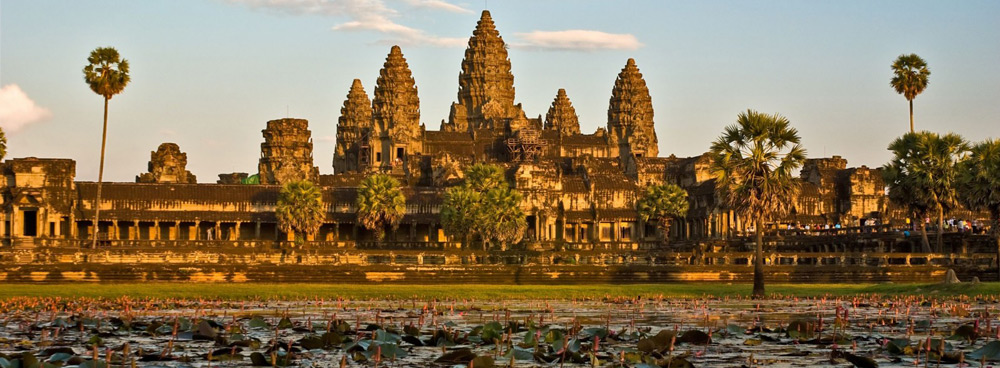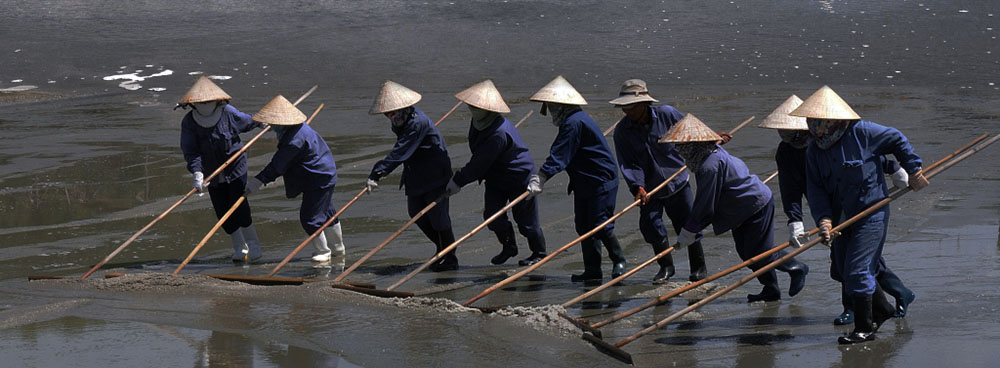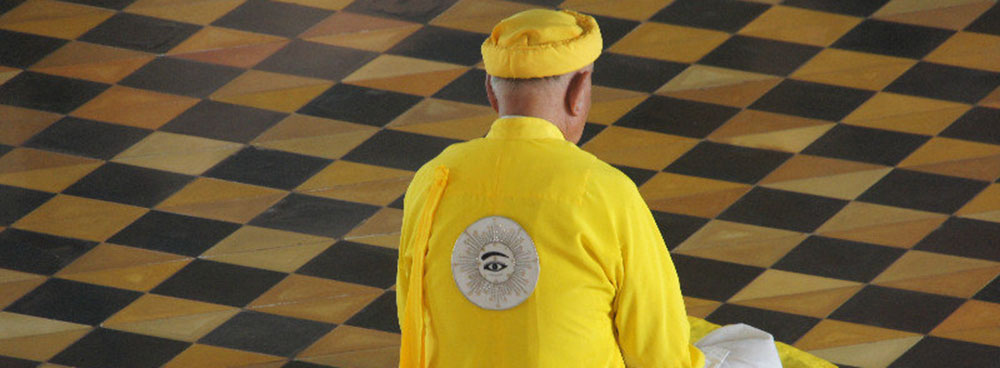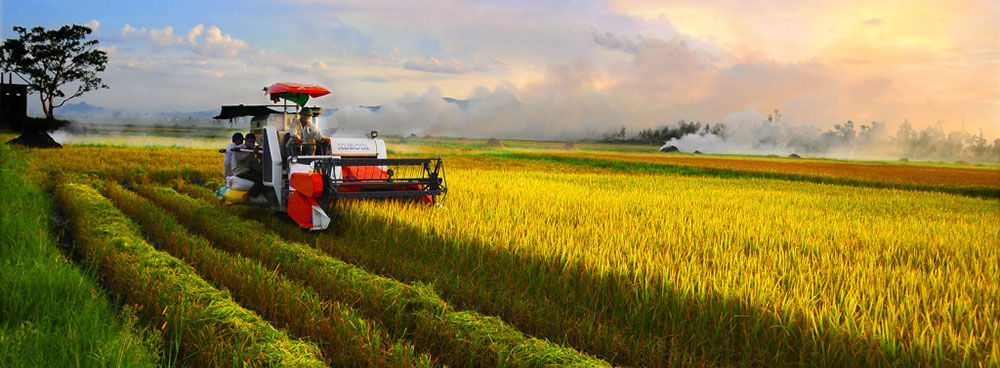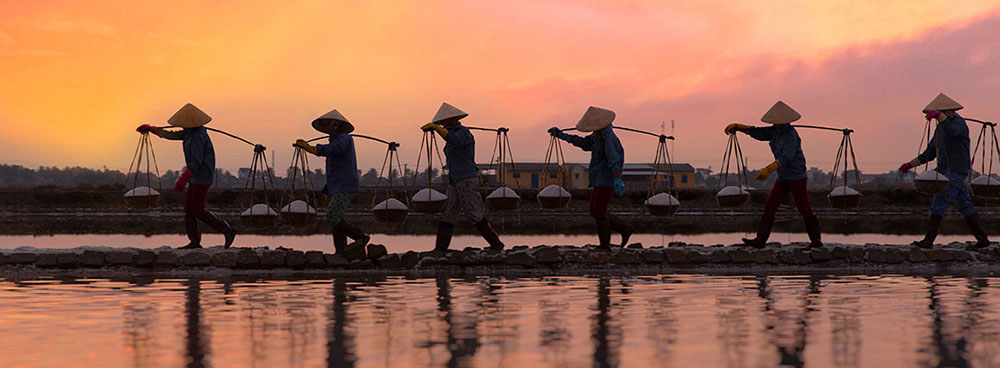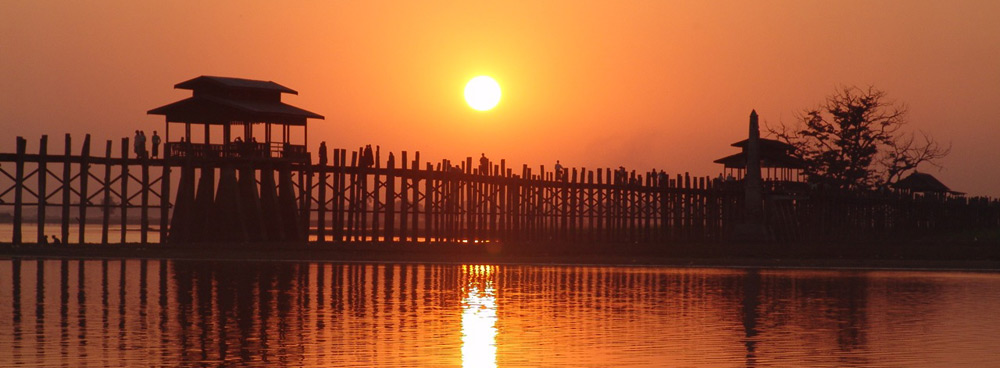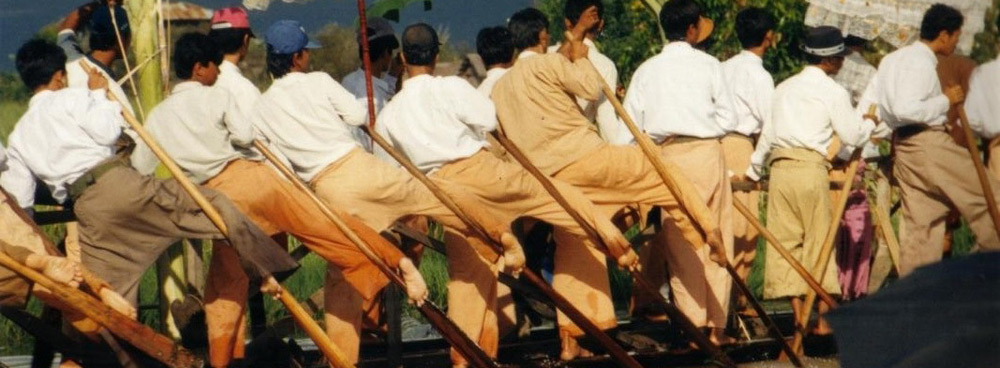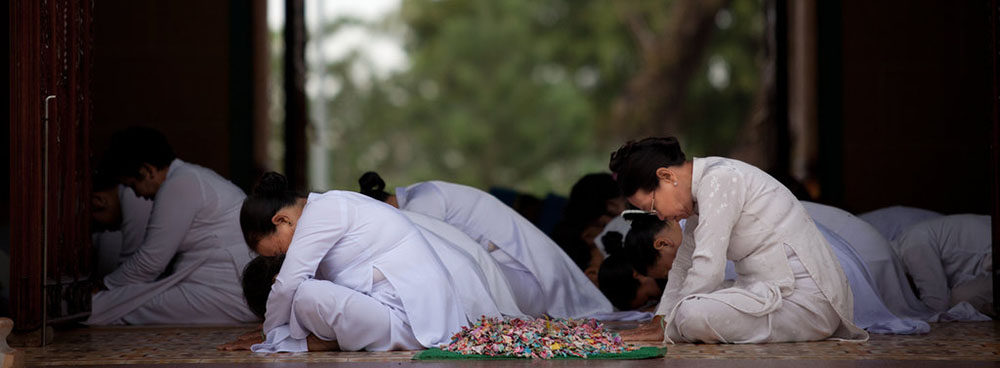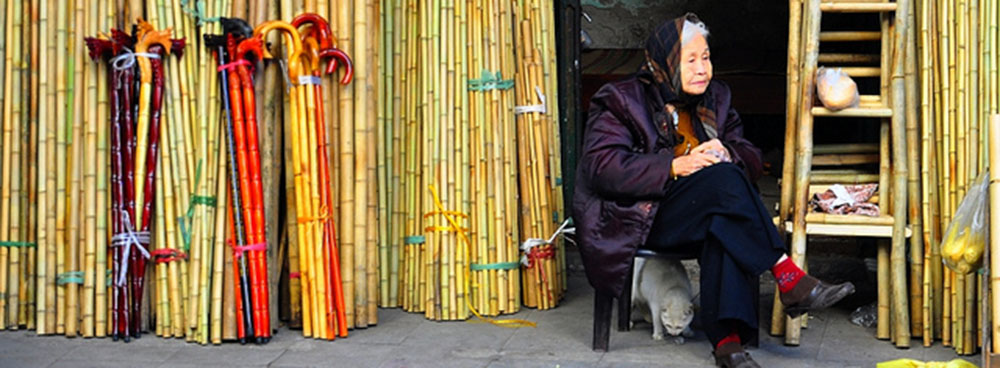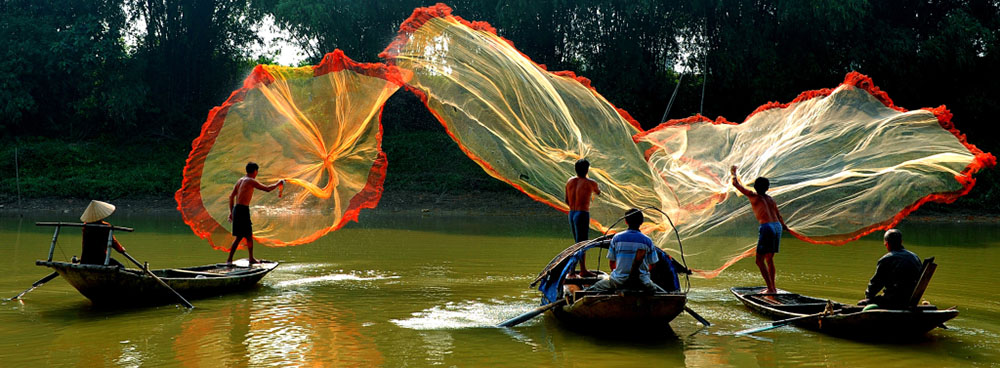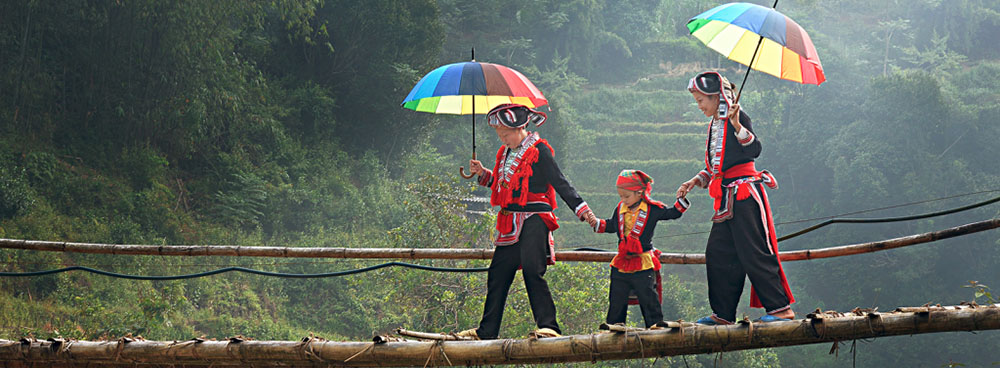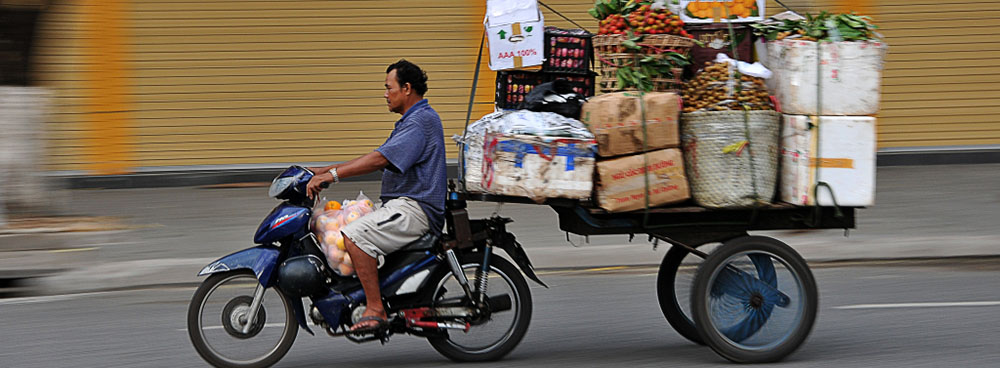POPULAR DESTINATION
VIETNAM HIGHLIGHT DESTINATIONS
Vietnam is an utter assault on the senses; at once dizzying, frenetic and fascinating. Conical-hatted street vendors sell their wares on the pavements outside gleaming high-rises and exquisite temples are surrounded by streets buzzing with thousands of motorbikes.
Wherever you travel you can't fail to be intrigued by this frenetic, fascinating country. The capital Hanoi is the focus for arts in Vietnam and has been since its foundation in the year 1010 while in Ho Chi Minh City business is king. Hue is steeped in imperial history, Hoi An the place to soak up the atmosphere and the largely undeveloped coastline is the place to kick back.
Life in urban Vietnam is conducted on the streets. In bia hois (pavement pubs) men sup ice-cold beer and odours from makeshift food stalls fill the nostrils: see steaming pho, a noodle soup with various unidentifiable chunks of meat, or grilled chicken feet. Along nearly all the moped-clogged streets produce is sold. Tubs wriggle with live sturgeon, crabs and frogs (still a delicacy from French colonial days), baskets are top heavy with colourful and bizarre fruit, and every possible piece of a pig is on sale.
Rural Vietnam is entirely different. Just a short distance from the cities, water buffalo wallow in green rice paddies and elegant women wearing traditional conical headwear cycle along dusty paths.
Hanoi is the capital of Vietnam and is the second most populous city in the country with approximately 4 million people. Compared to Ho Chi Minh City, Hanoi is more traditional and refined.
Teeming with culture, history, great restaurants and nightlife, Hanoi offers a fantastic introduction to Vietnam. High-rise buildings are rare in this city which is striving to retain its character. Instead, grand colonial buildings, tranquil lakes and a maze of narrow streets provide the intriguing contrasts.
Hanoi is an elegant city located on the banks of the Red River with tranquil Hoan Kiem Lake at its heart. North of the lake are the bustling streets of the Old Quarter, each street named after the trade that used to take place there.
Following years of rampant inflation, poverty and repression, the government introduced economic reform or doi moi in 1986, allowing people to own their own businesses. Now Hanoi has been totally transformed and visitors are entranced by the city and its residents.
The wide boulevards and large colonial buildings reflect Hanoi’s period as a French Protectorate, whilst other areas are truly Vietnamese with a muddle of narrow streets which bustle from dawn to dusk.
Sure it is touristy, and if you take a boat trip you'll be among a flotilla of dozens of old converted junks, but Halong Bay still remains one of the most impressive sights in the world, declared a World Heritage Site by UNESCO in 1994. Take the opportunity to borrow a kayak (all boats should do this) and paddle through the limestone karsts dramatically rising up out of the sea. Or spend the night on one of those junks and explore the caves hidden deep in the islands, pass floating villages and at night enjoy a sundowner on the top deck and look out for shooting stars.
Getting here: 4 hour drive from Hanoi through urbanized areas. You’ll transfer to the docking station, since this is a popular destination; expect bustling scenes of boats and large crowds. All this will be left behind once you sail away to a more serene environment.
Mai Chau is the heart of a beautiful valley that is a world away from the hustle and bustle of Hanoi. The modern village is an unappealing sprawl, but as you emerge on the rice fields and rural living it is transformed into a real paradise. It’s a stunning area, and most people here are ethnic White Thai, distantly related to tribes in Thailand, Laos and China.
Although most locals no longer wear trad¬itional dress, the Thai women are masterful weavers who ensure that there is plenty of traditional-style clothing to buy in the village centre. You will see women weaving on looms under or inside their houses in the village. Much of the silk looks similar to that seen in Laos. The Thai of Mai Chau are less likely to employ strong-arm sales tactics than their H’mong counterparts in Sapa: polite bargaining is the norm rather than endless haggling
Nestled in a valley amongst verdant hills in the northwestern highlands, Mai Chau’s stunning scenery offers excellent opportunities for trekking and mountain biking while providing a glimpse into the village life of the H’mong and White Thai ethnic hill tribes.
Getting here: Mai Chau is a 4 hour drive from Hanoi. Although the drive can be strenuous due to the mountainous roads, it does offer a good view of the countryside.
Sapa's stunning alpine scenery is home to several hill tribe villages where life continues pretty much unchanged. Many can be reached by jeep but to get to the more remote villages be prepared to hike. The reward is an overnight in a stilthouse with a family resplendent in riotously colourful traditional costume.
Set high in Vietnam’s northeast mountains, the hamlet of Sapa offers spectacular views of jagged mountain ridges, terraced rice paddies and green valleys inhabited by people of various ethnic minority groups, most of whom congregate in Sapa’s colorful market. Each group has its own distinctive style of dress. From early childhood, girls learn to grow and weave hemp, to dye cloth with indigo, to sew the family’s clothes, and to decorate items with traditional embroidery motifs. More recently, Sapa has become a tourist mecca.
Getting here: The best way to get to Sapa is to take a 10-hour overnight train from Hanoi. Departing at night you wake up refreshed the next morning in Sapa ready to begin your adventure. Visiting a more remote hill tribe market requires a 3 to 4.5 hour drive on bumpy dirt roads through mountains. The trip is for the adventurous; otherwise enjoy your time in nearby hill tribe villages.
Set near the coast in central Vietnam, from the 16th to 19th centuries the riverside town of Hoi An once drew merchants from as far as Japan, India, Indonesia and Europe who bought the area’s silk, spices and porcelain. Hoi An still retains remnants of its trading days as evident in the bustling market and abundance of souvenir and tailor shops. What makes Hoi An remarkable today is that its Old Quarter has been beautifully preserved, the streets still lined with old tile-roofed shop houses, shady pagodas and colorful communal halls earning it the status as a World Heritage Site by UNESCO. Hoi An is surrounded by attractive countryside where you can observe the traditional way of life of farmers and fishermen.
Getting here: Hoi An is a 30 minute drive from Danang International Airport.
While imperial rule ended more than six decades ago, the central city of Hue still bears the marks of its royal past. From 1802 to 1945 Hue was home to 13 Nguyen emperors, whose palaces and tombs provide fascinating glimpses into the luxurious and secretive world of the court. During this period, the Imperial City was built according to the practices of Feng Shui that dictates the location and shape of spaces in harmony with both the physical and spiritual.
The former imperial city of Hue is crammed with wonderful sights. The Imperial Citadel, suffering from the ravages and war and the tropical weather, is slowly being painstakingly renovated; riverside is the Thien Mu pagoda where novice monks peek shyly at the visitors; wander through ancient garden houses, and the mausoleums of the Emperors, each unique in style.
Getting here: Hue has a small domestic airport. It is a 1 hour flight from Hanoi and Ho Chi Minh City.
Nha Trang has a split personality. One takes the form of a smaller Danang – a bustling Vietnamese city humming with commerce but blessed with access to a beautiful beach. The other is a Western resort town encompassing several blocks of hotels, tourist shops, bars and international restaurants.
The city is indisputably beautiful, bordered by mountains, with the beach tracing an impressive long swoop along a bay dotted with islands. Topiary and modern sculpture dot the immaculately manicured foreshore. The only blight on the horizon is the Hollywood-style sign for the Vinpearl complex – an ugly scar dominating nearby Hon Tre Island.
Nha Trang offers plenty to keep tourists occupied – from island-hopping boat trips and scuba diving, to mudbaths and historic sites. But the main attraction for most visitors is lounging around on deckchairs at a beachfront bar and drinking cocktails in comfort.
Getting here: A 45 minute drive from the small domestic airport located in Cam Ranh City. It is a 1 hour flight from Ho Chi Minh City and 1hr 40min from Hanoi.
Phan Thiet is a large fishing village best known locally for its fish sauce production. Located 200 km from Ho Chi Minh City, Phan Thiet is a gateway to nearby beaches which are popular for both local and tourists alike. Mui Ne, a nearby resort town, has 21 km stretch of sandy beaches lined with hotels, resorts, restaurants, and nightclubs. Mui Ne is subject to onshore winds from the South China Sea and is especially breezy from November to May, which may not be ideal for swimming but is popular for wind and kite surfing. Other attractions in the area include the white and red sand dunes, Po Klong Garai Cham tower, and Ocean Dune’s Golf Club, a 6746-yard par 72 course designed by Nick Faldo.
Getting here: Phan Thiet is a 4½ hr drive or a 5 hour train ride from Ho Chi Minh City.
Dalat is quite different from anywhere else you’ll visit in Vietnam. It was established as a resort center in the highlands at the beginning of the 1900’s by homesick French who were attracted by its cool, spring-like weather, pine forests, waterfalls and lakes, especially Da Lat’s year-round temperate weather, stands in contrast to Vietnam’s otherwise tropical climate, has led it to be nicknamed the “City of eternal spring. The architecture of Đà Lạt is dominated by the style of the French colonial period and lasted still today.
Year-round, the temperature hovers around 20˚C (68˚F), making this a favorite destination for outdoor enthusiasts. Mountain bikers and hikers will delight in the area’s trails, as well as in views of pine-covered hills, organic farms and lush tea and coffee plantations. Dalat hosts a flower festival every other year which normally takes place in mid-December for one week and features a flower exhibition and a flower parade around Xuan Huong Lake.
Getting here: Dalat has a small domestic airport. It is a 45-minute flight or a six hour drive from Ho Chi Minh City. From Hanoi it takes 1hr, 40 minutes.
One of Vietnam’s star attractions, mountainous and forested Phu Quoc is a splendid tropical getaway set with beautiful white-sand beaches and quaint fishing villages. Adventure comes in many forms here – from motorbiking the empty dirt roads circling the island to sea kayaking its quiet inlets, scuba diving the coral reefs or simply having a bang-up seafood meal followed by a cocktail on the beach. Once a sleepy retreat, Phu Quoc has ramped up tourism significantly, and visitors can now choose between five-star resorts and rustic family-run bungalows. Plans are underway for developing the island even more heavily – a la Phuket style. If you’re looking for a relaxing beach getaway without any distractions or a noisy nightlife then Phu Quoc is the ideal place to visit.
Getting here: A 20 minute flight from Rach Gia (Mekong Delta) or 50 minute flight from HCM City.
One of the stellar attractions in this region, the Con Dao Archipelago is slowly gaining attention for its startling natural beauty. Con Son, the largest of this chain of 15 islands and islets, is ringed with lovely beaches, coral reefs and scenic bays, and remains partially covered in thick forests. In addition to hiking, diving and exploring empty coastal roads and deserted beaches, there are some excellent wildlife-watching opportunities.
The Con Dao is an ideal place for nature lovers and an opportunity to visit unspoiled tropical islands before they become developed.
Getting here: Con Dao has a small modern domestic airport. It is a 50-minute flight from HCM City.
Explore the watery world of the Mekong Delta where channels of the might Mekong Delta crisscross the land and provide a fertile place to grow vast swathes of rice and fruit. Discover riverine towns, floating markets and small riverside industries and spend the night in a homestay with a farming family.
The river markets on the Mekong Delta are an unmissable sight. Life here is dominated by the mighty Mekong and much of Vietnam's rice crop is grow, and the floating markets are still an essential part of life in the south. Get up early to experience Can Tho floating market at its best. Dozens of wooden boats, many that have seen better days, carry the freshest fruit and vegetables. Smaller boats weave through them perusing the wares and the morning air is filled with the sound of good-natured haggling over price.
High-rise buildings loom over shabby French colonial villas and saffron-robed monks collecting alms walk past karaoke bars; this is 21st century Ho Chi Minh City.
It may be officially known as Ho Chi Minh City but it is often still referred to as Saigon, the name evocative of a city with a past. One of the most poignant symbols of this is the Reunification Palace, where the last days of the Vietnam War were played out.
Today, Ho Chi Minh City is a mesmerising gateway for visitors to Vietnam where traditional and modern influences live side by side. Imagine incense-filled pagodas filled with a constant stream of worshippers; streets buzzing with the engines of countless motorbikes and pavements teeming with street vendors, barbers, dentists and cafés selling steaming bowls of noodle soup by the roadside. Amid this vibrant Asian backdrop are gleaming shopping malls, skyscrapers, coffee shops and bars that would not look out of place in the west. Ho Chi Minh City is the face of the new Vietnam.







